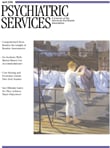The Therapist's Notebook for Integrating Spirituality in Counseling, Volumes 1 and 2
Regardless of the discipline, most training programs today espouse patient care or a treatment focus that is holistic—aimed at treating the complete person. Despite this, spiritual concerns typically receive short shrift in psychotherapeutic education and are often looked at as potential clinical quicksand, fraught with danger and to be explored no more than ankle deep. The two-volume set, The Therapist's Notebook for Integrating Spirituality and Counseling , is mindful of this historical bias and addresses it directly, to include the potential pratfalls of psychotherapists entering this arena in the traditional 50-minute hour.
What makes these volumes extremely helpful is the completeness of their scope. Not only do they focus on theoretical issues, but each chapter includes a clinical vignette or two relevant to the topic at hand, as well as activity sheets, homework assignments, assessment tools, clinical caveats, and bibliographies. Early in the preface it is evident that these volumes are the editors' labor of love and are meant to provide a safety net and cheering section for clinicians who are willing to engage their psychotherapy clients in a manner that does not shy away from spiritual concerns.
The editors and contributors are clear that not all clinicians are personally called to this kind of a approach because of their belief stance and that others, despite being "believers," might be ill suited to engage their clients on spiritual matters. Clinicians are admonished to have their own spirituality nourished and well grounded before venturing into this arena. Toward this end, several chapters in volume 1 address clinicians' spiritual health and self-assessment. The fact that these volumes do not advocate turning psychotherapy into "spiritual direction" or pastoral counseling is also made quite clear.
What is recognized is twofold. First is that clients' spiritual histories and "baggage" can potentially be major millstones around the neck of their emotional health if not addressed. Second, and more frequently, their spiritual resources can be a driving force for change and a source of energy on the journey to health or recovery. The editors posit that mutually beneficial relationships can be developed between clergy and therapists who are open and are known for their willingness to include spirituality in therapy. The clergy can potentially become an active source for psychotherapy referrals, and therapists can refer clients with fundamental spiritual issues to clergy they know and respect. In addition, clergy and therapists who know and trust one another can provide consultation to each other in their respective disciplines as need arises.
Volume 1 of the set is more general and not as tightly organized as volume 2. Volume 1 opens with essays on the therapist's preparation to engage the client's spiritual concerns and addresses ethical issues and the dangers of letting one's religious beliefs potentially get in the way of clinical neutrality or objectivity. Tools are offered to enable clinicians to assess their clients' spirituality and to better understand their images and understanding of a deity. An interesting essay reviews how to use a genogram to assess a client's family faith history and the degree to which it has shaped a client's own belief system. Volume 1 ends with seven essays exploring applications of different faith systems to spiritual and existential concerns. These range from more common Judeo-Christian faiths to Eastern beliefs as well as an essay on an African Ntu spiritual perspective.
Of the two volumes, the second is more satisfying, because it is more tightly edited regarding practice concerns, defined target populations, and life-journey existential issues. Very specific essays are offered on how to integrate spirituality in work with children and adolescents and the elderly population, and detailed essays address engaging ethnic minority, gay and lesbian, Jewish, and Catholic populations. Volume 2 ends with a particularly compelling selection of essays about integrating spirituality in working with core life issues: illness, trauma, loss, and death. One essay that stands out is about working with fathers as they coped with fetal demise and miscarriage.
These two volumes are a very useful addition to the practice literature in the psychotherapy field. They are so generously filled with vignettes and clinical tools that to call them how-to manuals would not be an exaggeration. It is clear that the editors hope to encourage clinicians to become more confident not only of the appropriateness of integrating spirituality into psychotherapy but also in their competence to do so. The sacred and the secular realms, although profoundly different in many respects, do have a core overlap. Suffering, birth, death, loss, and searching for identity and meaning are not only Biblical and existential issues but precisely the kinds of things that often bring people to the 50-minute hour. In the hands of a skilled and sensitive clinician, an openness to a spiritual perspective would appear to provide a powerful tool for healing in a holistic sense.



